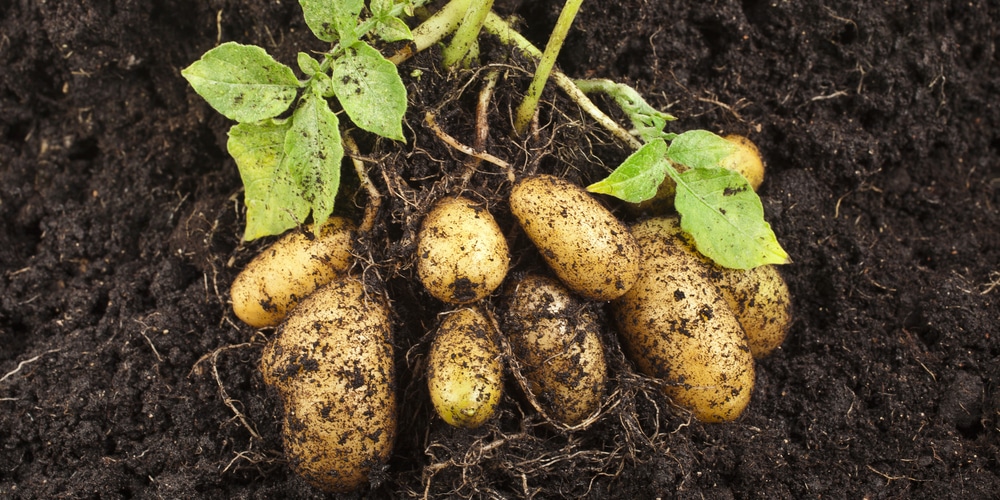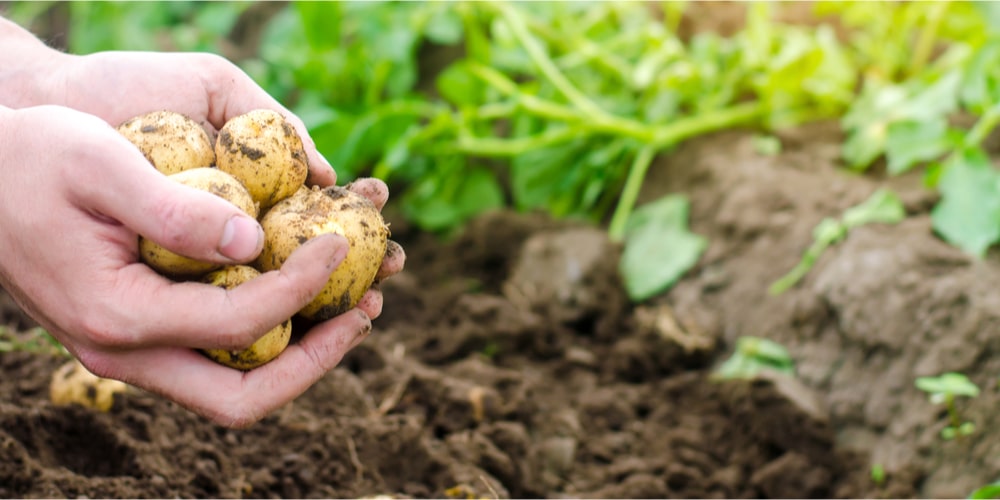Growing potatoes in your vegetable garden is a great way to add variety. Also, you can plant potatoes very early in the season to get harvests sooner than with most plants. Plus, potatoes are relatively easy to grow and are perfect for beginner gardeners.
Besides the importance of taking proper care of your plants, you must also learn when to plant potatoes in zone 7 and 7b: it will ensure your potatoes grow healthy and that they will give your prosperous harvests. While many people overlook this step, you must find suitable plants for your region. Keep reading if you would like to learn more about caring for potato plants in zone 7 and 7b. In this essential guide, you’ll find all of our favorite recommendations for getting healthy potatoes from your garden.
When To Plant Potatoes in Zone 7 and 7b

In zone 7 and 7b, you can plant potatoes from January through March. Because they don’t like warm temperatures, potatoes do best as fall crops. Start these plants between one to two weeks after the last spring frost to have excellent results.
In zone 7, you can plant them earlier (as soon as you can work the soil), but you must ensure the ground is not too wet. Feel it with your fingers: if it’s not dry yet, wait for longer. Otherwise, the potato plants’ roots might rot. Also, the temperatures should be around 50F for the conditions to be ideal.
Popular wisdom says that you should start potatoes when dandelions start blooming. However, make sure you also check your local weather before deciding. Usually, you should plant your potatoes around two weeks before the last freeze. The key is to have them late enough so that your plant’s roots don’t get too wet and give them enough time to grow for getting a crop before the heat starts.
You can even plant your potatoes in August for a fall crop. However, ensure temperatures are not too high around those dates.
Growing Conditions
Potatoes do best in cold environments and loose, well-drained soil. Select a location where your plants can get full sun (at least six hours per day), and don’t forget to space your potatoes in rows about 3 feet apart. Don’t forget to add manure or compost to the soil before planting. Potatoes are heavy feeders and need as many nutrients as you can provide them! Mulching is the best way to increase water retention and improve nutrient content.
After planting them, you should wait around 15 to 20 weeks before your potatoes are ready to harvest. Don’t forget that potatoes are not the same: you can find more than 100 varieties. And not all species are suitable for your region. Make sure you choose the ones that will grow best in your soil, temperature, and water conditions.
If you like to boil, bake, or fry potatoes, go for Russets: they are long and white and perfect for cooking. They perform very well in zone 7 and 7b. Other suitable options for hardiness zone 7 are Rounded White varieties and Red-skinned ones, which you can use for boiling or making potato salads.
One of our favorite tips for getting healthy potatoes is to harvest them when the foliage dies back. You can strengthen your plants by lowering the watering frequency after mid-August. Also, before you take them out of the ground, check the skins: mature potatoes have them thick and firmly attached to the flesh. If the skin goes off quickly, you might have to keep your plants on the ground for a few days.
When to Plant Potatoes in Zone 7: The Bottom Line
Potatoes are versatile vegetables that do well in USDA hardiness zones 7 and 7b. Because they are not too keen on hot temperatures, you must plant them early enough so that they can give you the delicious tubers before the warmest months of the year come.
Also, don’t forget to feed your potatoes with organic matter and add mulching around them to increase water retention and ensure they get all the nutrients they need. These plants love a cool climate but also need the sun to survive. If temperatures rise suddenly, don’t forget to keep your plants moist to ensure they will grow into healthy potatoes.
Use the tips and recommendations we included in this essential guide to making the most out of your potato plants.
